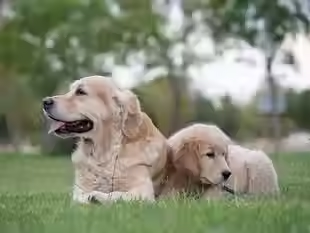

What Your Dog Learns When You’re Not Training
Jun 7
2 min read
1
21
0

Most dog owners think training begins when the leash comes out and ends when the session is over. But here’s the truth: your dog is learning all the time.
At Perspective K9, we emphasize that every moment with your dog teaches them something - and that includes the moments when you think training isn’t happening at all.
Training Never Really Stops
Dogs don’t compartmentalize “training mode” and “real life” the way humans do. Every experience teaches them something - whether you meant to or not. The question isn’t if your dog is learning, it’s what they’re learning without you realizing it.
What Dogs Learn By Accident
1. Rehearsing Disobedience If your dog hears a command and doesn’t follow through - and nothing happens - they’ve just learned that obedience is optional. This kind of repetition builds a habit of ignoring commands, even if the dog knows them.
2. Reinforcing Demanding Behaviors Jumping, whining, barking, pawing, and nudging often lead to attention - even if it’s unintentional. If you talk to or touch your dog during these moments, they learn that those behaviors work.
3. Creating Context-Specific Habits Many dogs will “sit” in the training center, but ignore it at home or in public. That’s because they’ve only practiced in one environment. Without structured reps in different places, behaviors don’t generalize.
4. Practicing Chaos If your dog rehearses rough greetings, uncontrollable excitement, or barking out the window every day, those patterns become hardwired. Even if they train well in lessons, the home environment is often where the real habits are formed.
How to Shift That Learning in Your Favor
You don’t need to train 24/7 - but you do need to be intentional about what’s allowed and reinforced throughout the day.
Add structure to casual routines. Use leash thresholds, crate time, calm door greetings, and other daily boundaries to reinforce good behavior.
Reward calmness, not chaos. Praise and treat when your dog is relaxed - not just when they’re excited or performing.
Use the same markers and follow-through at home as in lessons. Consistency helps your dog understand what’s expected, even in familiar places.
Stay aware of what you’re reinforcing. Eye contact, a touch, or your voice all count - be intentional with your responses.
Keep sessions short but effective. Even a few minutes of structured reps per day can reshape the way your dog sees the world.
Final Thoughts
If your dog is behaving differently at home than in training, it doesn’t mean they haven’t learned - it means they’re still learning how and where to apply those skills.
Let’s make those everyday moments count. If you need support building structure at home, we’re here to help guide both you and your dog through that transition.
📩 Contact us to learn more or schedule a consultation today.





